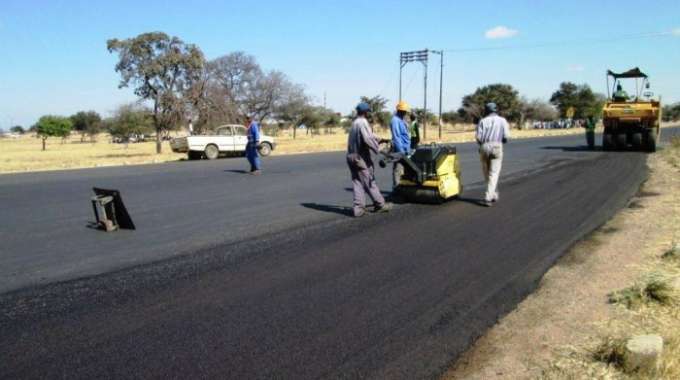Govt increases road rehabilitation efforts

Walter Nyamukondiwa in MAKONDE
Government has increased its commitment under the Emergency Road Rehabilitation Programme to $150 million, as it implements the second phase which targets sealing of roads, re-gravelling and reconstruction of bridges.
After restoration of areas cut off due to incessant rains attributed to Cyclone Dineo that struck early this year, the second phase targets periodic maintenance as most of the roads have outlived their lifespan.
Initially budgeted at $101 million, the programme’s commitment has since been increased by another $48 million after further assessment of the damage caused by the incessant rains. Bids from the District Development Fund (DDF), local authorities and the Department of Roads were higher than the initial allocations.
President Mugabe declared the country’s roads a state of emergency early this year, paving way for the commitment and mobilisation of resources. Part of the money is being raised through a $100 million bond, amid indications that about $59 million has been raised so far.
The Zimbabwe National Roads Administration (Zinara), which administers funds generated through toll and related fees, has given DDF $18 million for the second phase, which will, for the first time, result in all the 32 000 kilometres of roads rehabilitated before the onset of the rains.
A further $15 million has been earmarked for DDF recapitalisation, which will go towards procurement of road construction and maintenance equipment to be dispatched to all the provinces.
This is expected to expedite the maintenance and rehabilitation of roads, particularly in rural areas, where there are mostly gravel roads. DDF has been operating with dilapidated and obsolete equipment or outsourcing to manage gravel roads across the country.
The equipment will include tipper trucks, dozers, graders and front end loaders, which will make up road construction units in the eight rural provinces. DDF finance and administration director Mr Wilfred Kachitsa said the money had been provided by Zinara and tendering for the project was underway.
“The issue of recapitalising DDF has been on the cards for some time because the equipment we have been using is now past its economic usefulness, resulting in us hiring or making do with what we have,” said Mr Kachitsa.
Mr Kachitsa is also chairperson of the National Taskforce monitoring and evaluating the scope of works and use of resources in Mashonaland West Province. “We are grateful to Zinara for providing $15 million to capitalise DDF, which will reduce the turnaround time for maintenance,” he said.
“This will see the equipping of road construction units in all the provinces.” The Department of Roads is also carrying out rehabilitation works, together with local authorities, amid calls for a coordinated approach.
There have been instances where maintenance has been fragmented, resulting in some areas getting attention while others went for years without being repaired.
A monitoring team has toured roads in Mhondoro-Mubaira, Chegutu, the Alaska-Copper Queen and Chanetsa to assess the implementation of the second phase of the Emergency Roads Rehabilitation programme. The poor state of roads in some areas is affecting economic activities, as villagers incur huge transportation costs.
Mashonaland West provincial roads engineer Mr Finale Mapurisa said contracting of companies specialised in road construction helped to speed up the repair works.









Comments